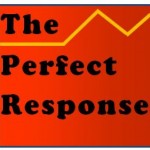Play your uncle Fred’s old vinyl copy of a Cream album, and years of dust caught in the grooves can make it seem like Eric Clapton was a tap dancer as well as an awesome guitarist.
Engineers measure the quality of audio and video equipment partly in terms of its signal to noise ratio. Older analogue forms of media—records, amplifiers, AM radio, and almost anything else along this sonic chain—often contributed significant amounts of their own noise: unwanted intrusions against the ideal of perfect silence. Hiss from audio tape and tube amplifiers were a common problem before the new century, as was an audible hum from a circuit picking up stray noise from other electrical sources. Even playing your uncle Fred’s old vinyl copy of a Cream album can let you re-live those days. Years of accumulated dust and scratches across the groves can make it seem like Eric Clapton was a tap dancer as well as an awesome guitarist. Listening to vinyl recordings of Debussy could be even worse. Clicks, hiss, pops and needle jumps were never part of the French minimalist’s musical vocabulary. Hearing them under his music is the equivalent to pouring coffee on a white rug.
These days music comes to us on a mostly clean canvas. Digital platforms and better equipment have mostly eliminated noise intrusions that older Americans remember from the early days of “stereophonic sound” and homemade Heathkit amplifiers. Even a humble MP3 player hardly produces an audible hiss.
Alas, a problem that good technology and engineering has mostly solved has remained as a common environmental nuisance. Too often the settings we inhabit impose a constant din.
I work on a bucolic campus with roads relegated to its edges, and it can still be hard sometimes to make myself heard over gas leaf blowers, jackhammers digging up water leaks, and all forms of construction and maintenance vehicles. Overhead, planes heading into local and distant airports narrow the gap between signal and noise.
Silence is especially an unsatisfied need in cities such as New York, where residents routinely retreat to headphones or the use of “white noise” to mask the cacophony of sound coming from the street and nearby neighbors. (See George Prochnik’s In Pursuit of Silence (2010) for a discussion of the range of intrusions).

And then there are the effects of too many evenings at concerts, where volume levels can equal the roar of planes arriving in the Caribbean’s notorious at St Maarten airport. Tinnitus is not just a condition of the old, but of many younger Americans who have racked up more decibels than miles. Sometimes the result of inner-ear nerve damage, Tinnitus affects about 1 in 5 residents of the United States.
If you have a one-note concert in your ears for long periods of time, you can match the frequency of the sound here, and more precisely, if wearing good headphones:
There is no shortage of studies connecting environmental noise to stress, lack of concentration, insomnia and irritability. With age we also seem less able to tolerate dense sound. For older adults, what was once the fun of being in a noisy restaurant with friends can begin to seem less festive, like trying to meditate on the beach directly under that Caribbean airstrip.
To be sure, we should celebrate the pristine audio landscapes we can now create. This is the age of complete music emersion. Technically speaking, musicians have never had a less cluttered acoustic to play against. But in spite of our successes with audio software, the idea of the signal to noise ratio is a reminder that we now have to contend with a world that is aurally more intrusive. As a solution, earphones not only transport us to to a paradise of music in its own study acoustic, they also help shut out the disordered noise of the places we occupy. That can be good. But the earwear that is part of the uniform of a commuter or jogger can also reduce our access to others nearby. We used to routinely greet strangers passing through our personal space with our eyes and maybe a simple hello. But the common sight of earphones on individuals in public spaces now sends a less welcoming vibe of unavailability.
Comments: woodward@tcnj.edu
